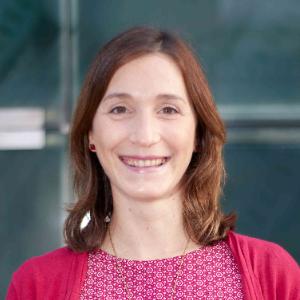Title : Accumulation of kaempferol-derived flavonols dramatically impairs seed coat development and seed longevity
Abstract:
Seed longevity is defined as the total time span during which seeds remain viable. As seeds constitute the main system for plant propagation, increasing their longevity is a major challenge for the conservation of plant biodiversity and for crop success. In order to optimize their life span, seeds possess complex systems of protection, detoxification and repair. The protective mechanisms include the presence of the seed coat, which functions as a barrier between the embryo and the external environment, conferring physical and chemical protection. The chemical composition of this structure has revealed essential to maintain seed viability, and seed coat compounds such as suberin and flavonoids, accumulated in different layers during seed maturation, have been associated with longevity. However, the role of flavonoids in seed longevity is still not well understood.
In this work, we further investigate the relationship between flavonoids and seed longevity. Accelerating ageing assays over different flavonoid loss-of-function biosynthetic mutants show that tt7 is, by far, the most sensitive one. Reciprocal crosses indicate that the reduced seed longevity of the mutant has maternal origin, demonstrating the role of the seed coat in this trait. While its embryo shows no morphological changes, tt7 seed coat development is impaired, presenting defective suberin and mucilage layers and accumulating starch granules at the end of seed maturation. These defects are specific of tt7, as other flavonoid biosynthetic mutants do not share them. TT7 is a flavonol 3’ hydroxylase that converts dihydrokaempferol to dihydroquercetin. Seeds of the tt7 mutant accumulate epiafzelechin-derived proanthocyanidins and kaempferol-derived flavonols, instead of the usual quercetin-derived ones. Genetic analysis indicates that accumulation of kaempferol-derived compounds in the seed coat are responsible of the observed structural defects. A dramatic alteration of the seed developmental programme in the tt7 mutant, is also evidenced by transcriptome analysis and our data suggest that auxin transport could be affected in tt7 seeds.
The characterization of tt7 and other flavonoid loss-of-function biosynthetic mutants made in this work evidences the relevance of flavonoid composition for seed development and highlights TT7 as an essential gene for proper seed coat development and for seed longevity.
Audience Takeaway Notes:
- This talk will delve into the role of flavonoids in seed longevity, a subject that is not completely understood.
- It would be shown that a tight regulation of seed coat flavonoid composition is essential for proper seed coat development and longevity.
- The presented work suggests that there is a relationship between flavonoids and auxin transport during seed development.
- This work constitutes a step forward in the understanding of the molecular mechanisms underlying seed longevity. This knowledge will be crucial for economy (crop success) and ecology (biodiversity).


